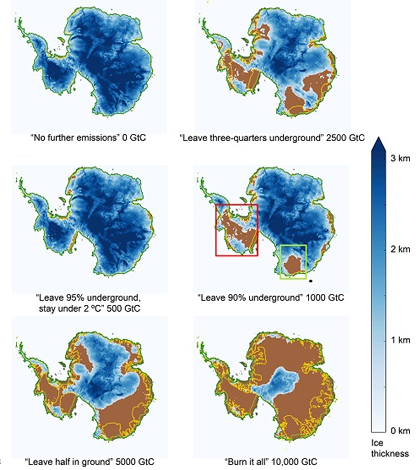Burning All Remaining Fossil Fuels Means Rapid Sea Rise

A chart of how Antarctic ice would be affected by different emission scenarios. (Courtesy of Ken Caldeira and Ricarda Winkelmann)
A recent study shows that if humans burn the ten trillion tons of carbon estimated to be still underground, Antarctica could melt almost completely and cause sea levels to rise by 58 meters.
Researchers used the Parallel Ice Sheet Model (PISM) to simulate these effects over the next 10,000 years. In all cases sea levels rise, but in low-emission scenarios Antarctica experiences net growth.
The authors discussed two mechanisms that drive Antarctica’s shrinking problem. Marine ice sheet instability occurs when the warming ocean causes ice in contact with the water to melt. As the bottom melts, an increasing amount of ice hangs over the water. This hanging ice eventually breaks off and falls into the ocean. The second mechanism is surface elevation feedback, which occurs when ice melts and the elevation drops. Since temperatures are higher at lower elevations, more melting occurs at a faster rate.
Top image: A chart of how Antarctic ice would be affected by different emission scenarios. (Courtesy of Ken Caldeira and Ricarda Winkelmann)




0 comments